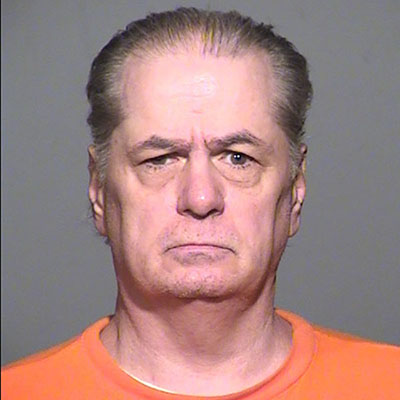
A federal appeals court overturned Barry Lee Jones’ conviction for the sexual assault and murder of a 4-year-old Tucson girl in 1994, saying his attorneys failed to adequately challenge the state’s case against him. . (Photo by Tim Evanson/Creative Commons)
WASHINGTON – A federal appeals court overturned an Arizona death row inmate’s conviction for the 1994 sexual assault and murder of a 4-year-old Tucson girl, saying attorneys in his case “dropped the ball” by failing to challenge the state’s evidence.
Barry Lee Jones was convicted in 1995 largely on testimony that he had custody of his girlfriend’s daughter, 4-year-old Rachel Gray, during the hours in which experts testified the girl incurred the injuries that led to her death.
But a three-judge panel of the 9th U.S. Circuit Court of Appeals ruled Friday that Jones’ attorneys failed to seek their own experts to counter the state’s case. In post-trial hearings, those experts would later testify that Rachel’s injuries could actually have come days or weeks earlier than the narrow three-hour window described by the state.
“The evidence presented at the (post-trial) hearings ‘undermines considerably the confidence in the outcome of the trial court proceedings,'” Circuit Judge Richard Clifton wrote in the opinion for the panel.
“Although this evidence would not necessarily exonerate Jones, there is a reasonable probability that the jury might have arrived at a different conclusion on the question of whether Jones had inflicted the injuries or knowingly failed to seek care,” Clifton wrote.
That ruling upheld a lower court that said Jones should be released from death row unless the state plans to try him anew.
Jones’ attorneys could not be reached for comment. A spokeswoman for the Arizona Attorney General’s Office declined comment on the ruling, except to say that the office will likely be filing a motion to keep Jones in jail “pending a petition for rehearing” before the entire 9th Circuit.
Jones was sharing a trailer in 1994 with his 11-year-old daughter, his girlfriend Angela Gray and Gray’s three children, the youngest of whom was Rachel.
Jones and Gray were arrested after taking Rachel to Kino Community Hospital, where she was pronounced dead on arrival early on the morning of May 2, 1994. The death was caused by “a small bowel laceration due to blunt abdominal trauma,” according to court documents, which said she also suffered from a laceration to her left scalp, injuries to her vagina and “multiple internal and external” bruises.

Barry Lee Jones has been on death row since 1995 for the sexual assault and murder of a 4-year-old but courts have ordered a new trial, saying his attorneys failed to properly defend him. (Photo courtesy Arizona Department of Corrections)
Jones was charged with one count of sexual assault and three counts of child abuse, for the injuries to her abdomen and head and for failing to seek care for her injuries. He was also charged with felony murder, which could be brought if he was convicted of a felony on the sexual assault or abuse counts.
Gray was charged with felony murder and abuse for failing to seek care and tried separately. But because the jury in her case found that her failure to get care for Rachel was reckless, but not intentional, she could not be convicted of felony murder.
At Jones’ trial, witnesses said they saw him take Rachel from the trailer on three separate occasions on the afternoon of May 1, with two children testifying that they saw a man they identified as Jones beating a girl in his van while driving that afternoon.
Witnesses testified that Rachel was bleeding and bruised and throwing up once back home. But when they said she needed medical care, Jones said he had taken her to a local fire station earlier where paramedics treated her cut. It was not until the next morning that they took Rachel to the hospital.
An emergency room doctor from the hospital and a forensic pathologist with the Pima County Medical Examiner’s Office testified that Rachel’s injuries were likely inflicted 12 to 24 hours before her death. Dr. John Howard, the forensic pathologist, also testified that Rachel’s head wounds could have been caused by something like the pry bar found in Jones’ van.
The only witness for Jones was his 11-year-old daughter, who said she had seen another child hit Rachel in the stomach with a metal bar on April 30.
Jones was convicted on all charges on April 14, 1995, and sentenced to death on the murder charge. He was also sentenced to life for willfully refusing to get care for Rachel, as well as shorter terms for the other charges.
In his latest appeals, however, Jones has argued that his attorneys failed to adequately represent him. In a seven-day hearing in U.S. District Court last year, one of his attorneys conceded that they “dropped the ball and didn’t follow up properly” on discrepancies in the state’s case.
For example, Clifton wrote, one doctor who testified in Jones’ post-trial hearings said Rachel’s abdominal injuries could have occurred a day or more before the afternoon of May 1. Another doctor testified that Rachel’s fatal injuries “could not possibly have been inflicted on the day prior to her death,” but likely occurred well before.
As to Jones’ and Gray’s failure to seek treatment for Rachel, the later doctors that the symptoms Rachel was undergoing “wouldn’t feel good, but they would not necessarily look like they were suffering from an impending catastrophe” that required immediate medical attention.
Howard said he would have testified in the original trial that Rachel’s injuries likely occurred before May 1 “if he had been asked the right questions” at trial, and that he did not make his position clear to the jury.
Clifton said there is still enough evidence to convict Jones for failing to get care for Rachel, but not enough to show he did so willfully – which would bring the felony murder charge – unless the state decides to try him again.